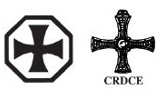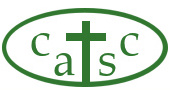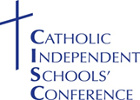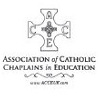
Contribute
We welcome contributions from schools and individuals.
Here are answers to some basic questions about writing for Networking - Catholic Education Today.
How long should articles be?
Usually it seems to work out best if contributors simply say what they have to say and let us worry about finding a spot for it in the journal. As a rough guideline we ask for articles of 1000/2000 words and school news of about 300/400 words.
What is the submission procedure?
Please send as a Microsoft Word file attached to an e-mail. To submit articles for publication, contact John Clawson by email at editor@networkingcet.co.uk
How should manuscripts be submitted?
We prefer Microsoft Word files submitted via e-mail. Try to avoid complex formatting in the article. Charts, graphs, and photos should be submitted as separate PDFs. Electronic photos should not be embedded into a Word document as this reduces their quality.
Photographs and Illustrations
Photographs and Illustrations should be supplied electronically as high resolution TIFF (*.TIF) or JPEG (*.JPG) files).
Photographs and illustrations should be sent in colour with a resolution of 300 dpi and a minimum size of 100 mm x 100 mm when printed (approx. 1200 pixels wide on-screen). Hard-copy photographs are acceptable provided they have good contrast and intensity, and are submitted as sharp, glossy copies or as 35 mm slides or as scanned high resolution digital images (eg. a 300 dpi 1800 x 1200 pixel *.JPG).
- Computer print-outs are not acceptable.
- Screen captures are not ideal as they are usually not very high quality.
Captions
Each photograph or illustration should have a self explanatory caption. If you do not supply images, you may be asked to submit suggestions and possible sources of non-copyright material.
Who owns copyright to the article?
You do but Networking - Catholic Education Today owns copyright to our editing and the laid-out pages that appear in the magazine.
What are some hints for success?
As much as possible, talk about your experience rather than pure theory (unless discussed in advance) Use specific examples to illustrate your points. Write the way you would talk, with a minimum of jargon. Near the beginning of the article, include a paragraph that states your intentions. Don’t be subtle about it: "This article will..." is fine.
Generally speaking we do not pay for contributions.
Closing Dates for Copy - Volume 25 2023/2024
Issue One - Winter 2023/2024 edition
- Copy to Editor by 11th December 2023.
- Published to schools 11th January 2024.
Issue Two - Spring Term 2024 edition
- Copy to Editor by 9th April 2024.
- Published to schools 10th May 2024.
Issue Three - Autumn Term 2024 edition
- Copy to Editor by 11th August 2024.
- Published to schools 14th September 2024.














